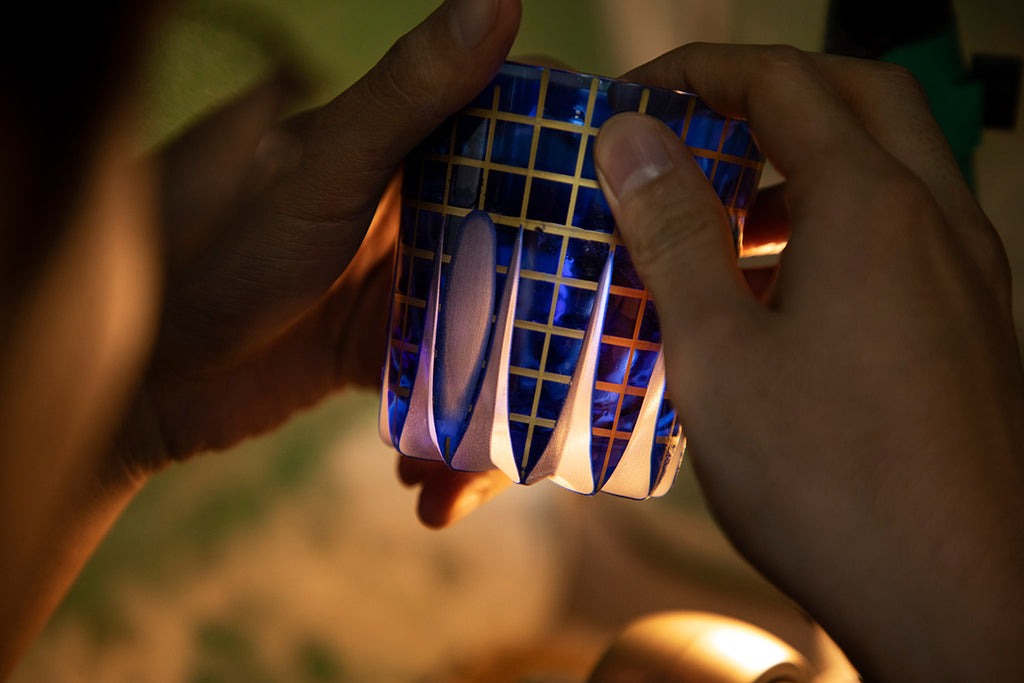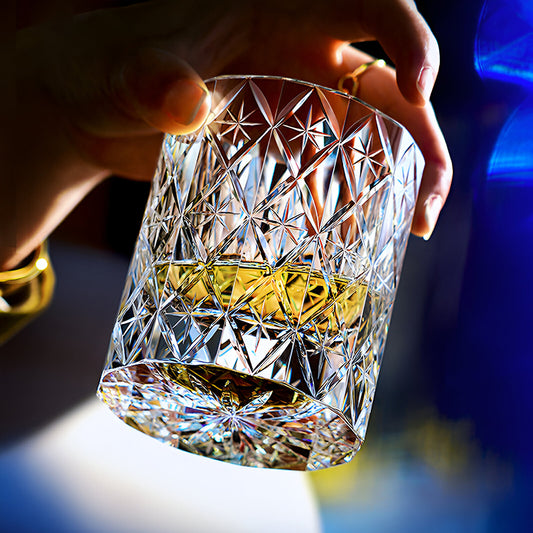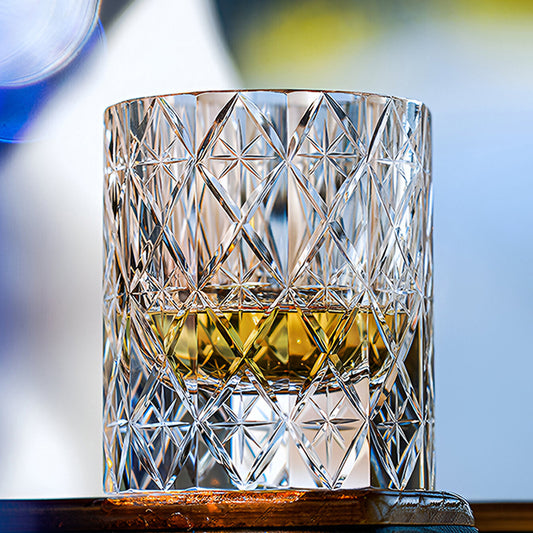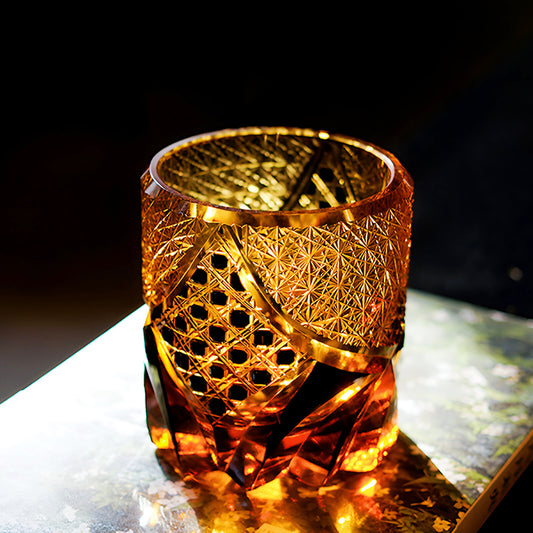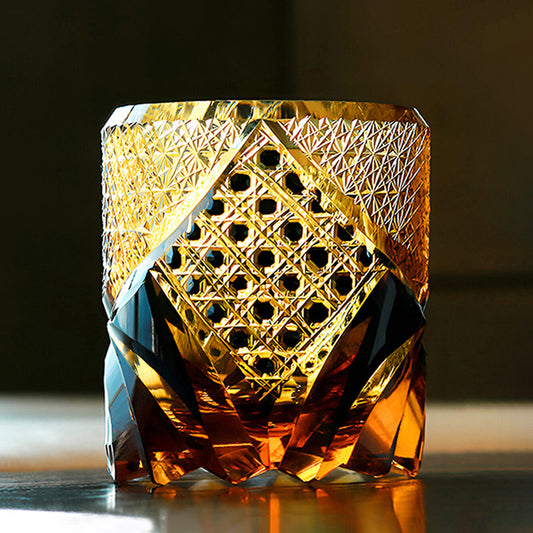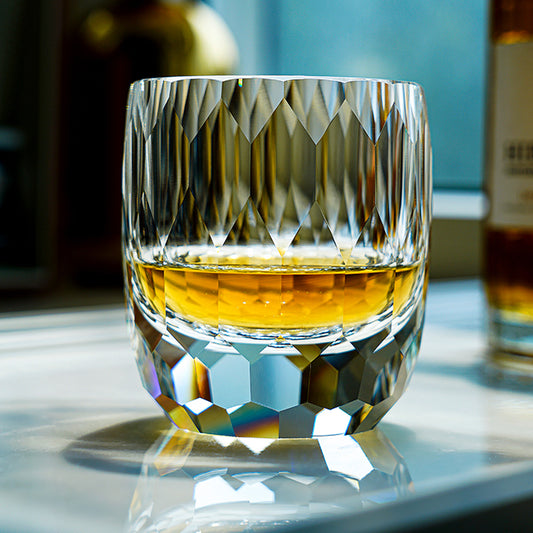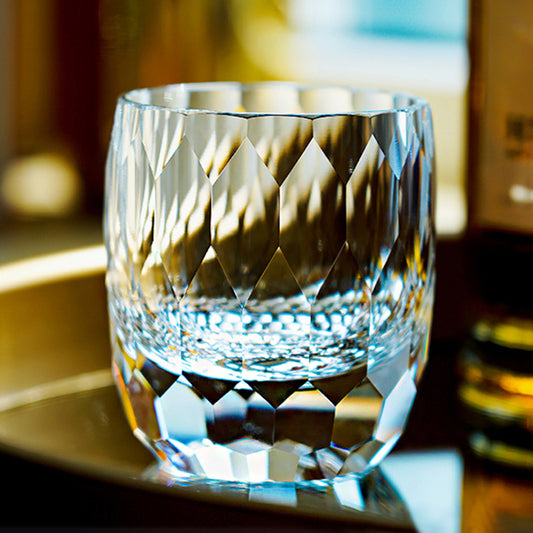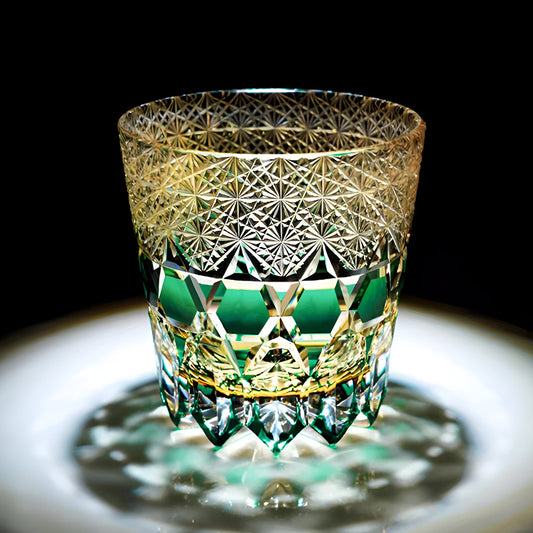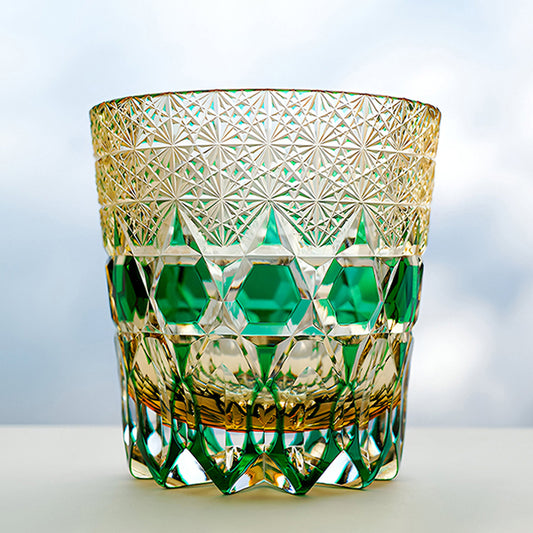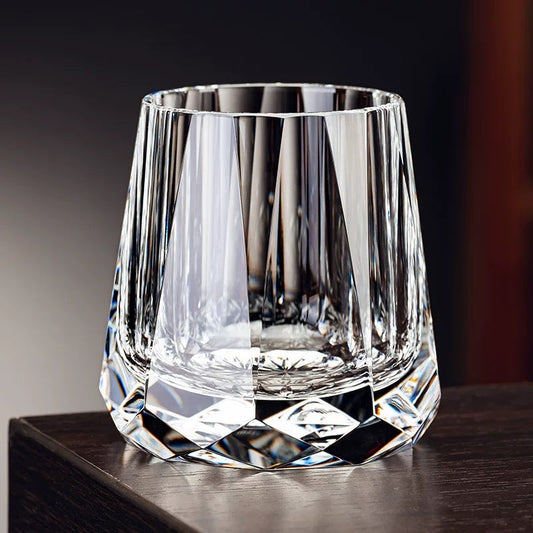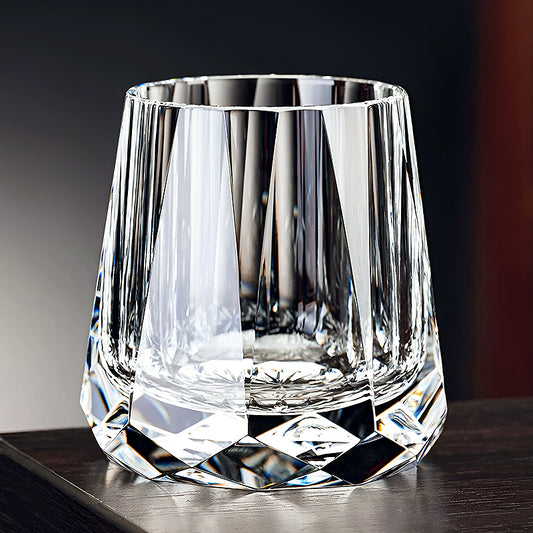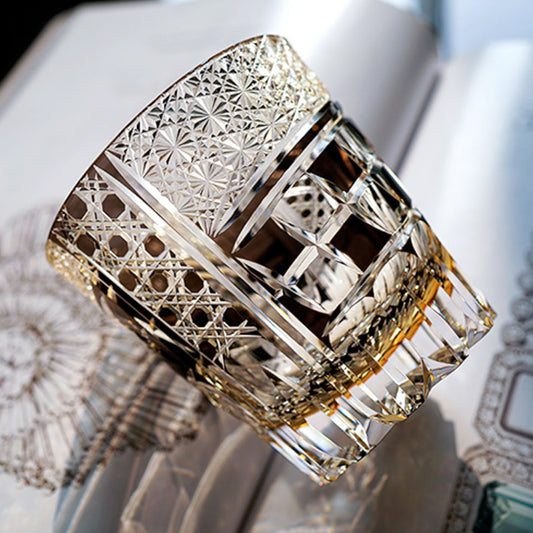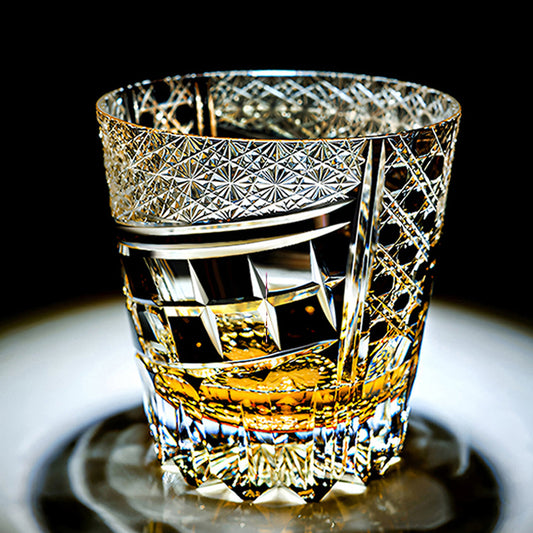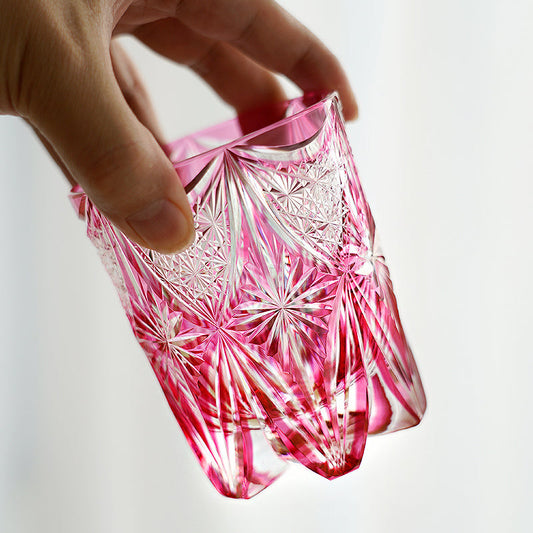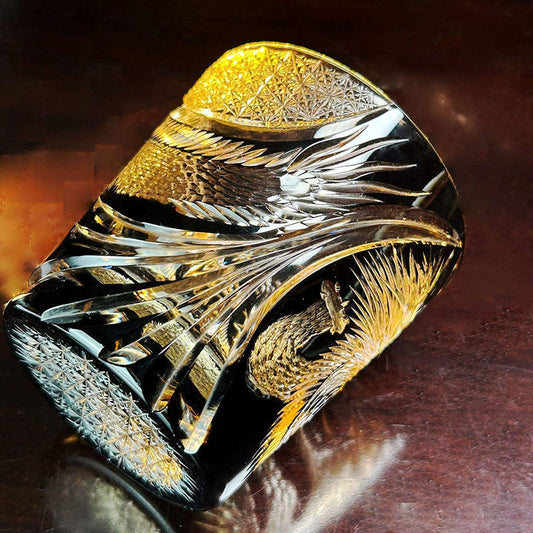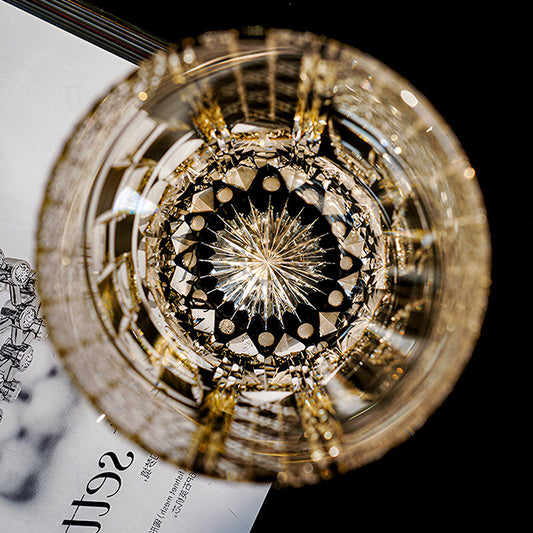In Japan, various types of ceramic ware have been nurtured, almost dominating the coffee utensil industry today. It can be said that every coffee enthusiast must have several utensils or coffee cups that come from Japan. In fact, in Japan, there are many famous glassware items as well. Their inheritance and tradition from ancient times to the present have allowed many old crafts to flourish and be passed down.
During Japan's Edo period, the cutting glass technique known as "Edo Kiriko" was first used to produce cutting glass. "Kiriko" refers to a process of cutting and polishing glass into shape using metal discs or grindstones. This technique became popular and expanded during the Meiji era, and was particularly prosperous in the Edo region at that time, which is now known as Tokyo.
These Cutting glass, known as Edo Kiriko, were designated as a national traditional art craft of Japan in the 14th year of Heisei era. Apart from Edo Kiriko, Satsuma Kiriko, which originated in Kagoshima (formerly known as Satsuma), is also one of Japan's representative cutting glass.
The process of creating cutting glass involves first marking the cutting positions on the glass surface with lines. This step is called "kire," where the rough outline is cutting away. The next step, called "arazuri," involves refining the details. After completing the fine details, known as "sanban," the Cutting surface is polished smooth, a step called "ishikake." This process consists of five steps in total. Initially, transparent glass was used more frequently, but in recent years, colored glass or crystal has also been used.

One remarkable feature of Edo Kiriko craftsmanship that astounds me is that the artisans do not sketch outlines on the glass surface. Everything is done in one stroke, showcasing the high level of skill and precision required in this craft.
Influenced by the broader Eastern culture, Japan greatly admires symmetrical beauty. Therefore, you will find many symmetrical pattern designs in the finished products of Edo Kiriko. These designs are mostly inspired by everyday objects that we can see around us. Some patterns may resemble chrysanthemums, while others resemble woven straw baskets, among others.
Due to the incorporation of intricate carving techniques, you will notice that the cutting parts of Edo Kiriko products sparkle brilliantly due to the refractive effects of light. This phenomenon makes an ordinary glass or cup shine brightly and radiantly, adding a touch of elegance and beauty to it.

The traditional craft of Edo Kiriko in Japan has been shaped by the accumulated experiences of numerous unnamed artisans in the city of Gion. Through continuous experimentation, innovation, and optimization, this traditional craft has evolved. It can be said that this evolution represents the continuation of a genetic heritage, deeply embedded in the hearts of every Edo artisan. This spirit has infused the Edo Kiriko craftsmanship we see today with vitality and life.
In today's market, Edo Kiriko glassware has transcended mere utility and has become highly valued as artistic pieces. These glass cups, often considered as artisanal works, can range in price from hundreds to thousands of dollars. Owning a piece of Edo Kiriko glassware may indeed be considered a rare and precious possession, given its craftsmanship and cultural significance.

Sometimes, I feel that the value of any object cannot be solely measured by its price. After all, the craftsmanship and hard work of artisans behind each piece are priceless and cannot be quantified in monetary terms. Perhaps times have changed, but the core things that people seek in their souls remain constant. Watching these craftsmen continue to pass down traditional skills from generation to generation, while also innovating and adapting to different aesthetic tastes of various eras, is what truly gives traditional crafts their vitality and enduring appeal.


